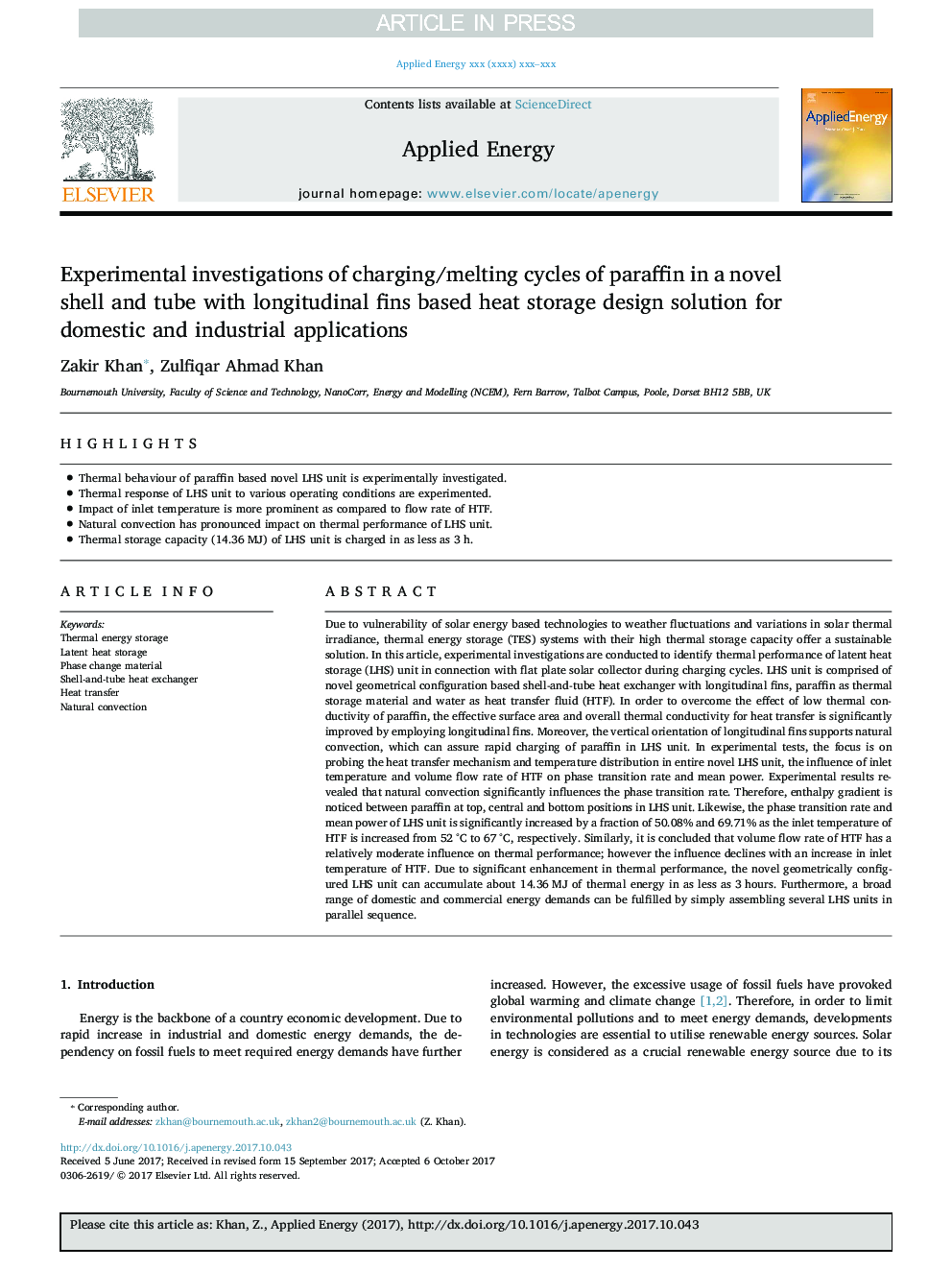| Article ID | Journal | Published Year | Pages | File Type |
|---|---|---|---|---|
| 6681979 | Applied Energy | 2017 | 11 Pages |
Abstract
Due to vulnerability of solar energy based technologies to weather fluctuations and variations in solar thermal irradiance, thermal energy storage (TES) systems with their high thermal storage capacity offer a sustainable solution. In this article, experimental investigations are conducted to identify thermal performance of latent heat storage (LHS) unit in connection with flat plate solar collector during charging cycles. LHS unit is comprised of novel geometrical configuration based shell-and-tube heat exchanger with longitudinal fins, paraffin as thermal storage material and water as heat transfer fluid (HTF). In order to overcome the effect of low thermal conductivity of paraffin, the effective surface area and overall thermal conductivity for heat transfer is significantly improved by employing longitudinal fins. Moreover, the vertical orientation of longitudinal fins supports natural convection, which can assure rapid charging of paraffin in LHS unit. In experimental tests, the focus is on probing the heat transfer mechanism and temperature distribution in entire novel LHS unit, the influence of inlet temperature and volume flow rate of HTF on phase transition rate and mean power. Experimental results revealed that natural convection significantly influences the phase transition rate. Therefore, enthalpy gradient is noticed between paraffin at top, central and bottom positions in LHS unit. Likewise, the phase transition rate and mean power of LHS unit is significantly increased by a fraction of 50.08% and 69.71% as the inlet temperature of HTF is increased from 52 °C to 67 °C, respectively. Similarly, it is concluded that volume flow rate of HTF has a relatively moderate influence on thermal performance; however the influence declines with an increase in inlet temperature of HTF. Due to significant enhancement in thermal performance, the novel geometrically configured LHS unit can accumulate about 14.36 MJ of thermal energy in as less as 3 hours. Furthermore, a broad range of domestic and commercial energy demands can be fulfilled by simply assembling several LHS units in parallel sequence.
Keywords
Related Topics
Physical Sciences and Engineering
Energy
Energy Engineering and Power Technology
Authors
Zakir Khan, Zulfiqar Ahmad Khan,
